Another week, another category of NZCYA Award finalists to highlight! Today, it’s the Elsie Locke Award for Non-Fiction finalists, answering questions about the hows and the whys of their fabulous books. From backyards, burrows and biographies to legends and linework, bringing together awesome authors and talented illustrators (sometimes in a two-for-one!) – it’s quite the collection. So read on…
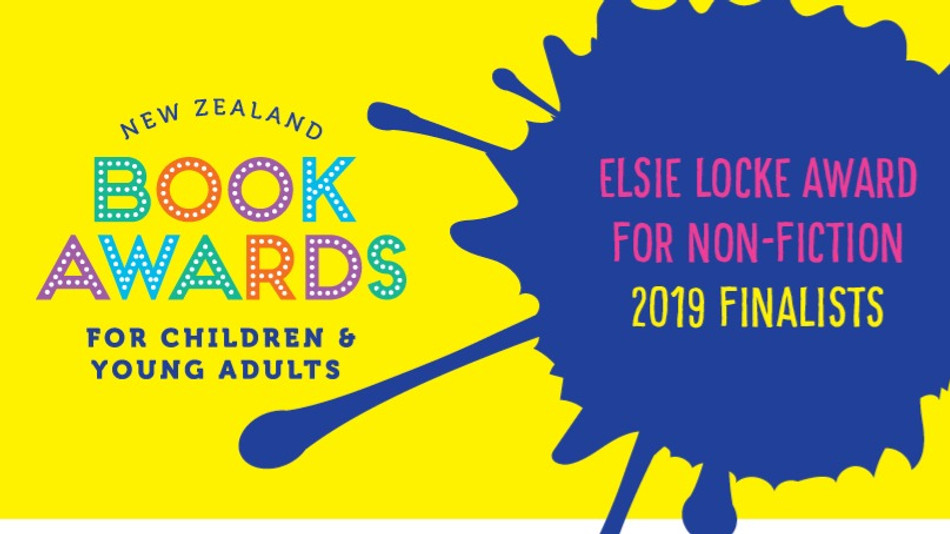

SARAH PEPPERLE
(ART-TASTIC)
Which five words would you use to describe your book?
Five words… This is hard! Bright. Imaginative. Busy. Irreverent. Fun.
Let’s expand a little – can you provide a five-sentence summary/sales pitch?
This is what I wrote on the back of the book: This ART-TASTIC activity book has some of THE BEST art you’ll ever see in Aotearoa New Zealand. And don’t freak out, but you’ll probably learn stuff too. By the time you’ve finished, you’ll have your own artist’s workbook full of artworks that will [definitely] possibly make you famous [all around the world] at home. Bold, bright and a little bit bananas, ART-TASTIC gets into the nitty gritty of how to look at, connect with and make art.
Describe the kind of the kind of reader you had in mind while writing your book.
Kids who like colour and mayhem on every page! A lot of kids think being good at art means being able to draw a realistic picture – but so much really good contemporary art is about ideas and attitude, not just aesthetics. And really, who cares if you’re good at it as long as it brings you some kind of happiness – whether that’s by making art or just looking at, understanding and enjoying it.
Can you give us some insight into your writing process?
I started by choosing the artworks to write about – ones that had something interesting in the making, or strange in the looking, or that needed a sideways shift to understand. Then whenever I found a spare 20 minutes in my day I’d just start writing, see what came out. Most of the time I think I’m not a natural writer, but occasionally you hit that vein where you can tell it’s going to come out okay. There are patches in the book that have no editing, and others where I’ve had to whittle it down – or take an axe to it. I am my own editor, so I can be as brutal as I like!
Most of the time I think I’m not a natural writer, but occasionally you hit that vein where you can tell it’s going to come out okay.
Working at an art gallery and writing about art sounds like a pretty easy fit, but actually it’s a little pond of perils. A lot of people have some serious and worthy ideas about art, and these people aren’t on board with talking about high art concepts in a way that is meaningful to a 10 year old. However, this book is most definitely not for the serious-minded, and my view is that we can all benefit from thinking like a 10 year old.
Can you give us a recommendation of two books that have stuck with you – one from your childhood and one from your adult life?
One from childhood: Mrs Discombobulous, which I have only just now realised was by the amazing Margaret Mahy. There was something about Mrs D’s pointy elbows and cantankerous attitude that was, not exactly appealing, but more… compelling? I read it over and over and OVER. Which now has me trying to figure out what that says about my younger self. Anyway, I’m picking another: Fungus the Bogeyman. I was raised in such a well-mannered house that this book caused me some internal confusion. It’s a book! It’s got snot and farts in it! Loved it.
One from my adult life: geez, I’ll sound so clichéd, but it’s got to be something like Perfume or The Magus or The Secret History. All read in my 20s when life was a lot more selfish. They’re not really recommendations though – just saying they got caught in my psyche at a particular time in my life. I started reading The Secret History again not long ago; I got a few pages in and I just couldn’t be bothered. It’s quite a self-indulgent read. Having kids, getting older – these things make me impatient with books.
BARBARA ELSE
GO GIRL (ILLUSTRATED BY ALI TEO, FIFI COLSTON, HELEN TAYLOR, PHOEBE MORRIS, REBECCA TER BORG, SARAH LAING, SARAH WILKINS, SOPHIE WATSON & VASANTI UNKA)
Which five words would you use to describe your book?
Inspiring, diverse, appealing true tales.
Let’s expand a little – can you provide a five-sentence summary/sales pitch?
Children find it grounding and confidence-building to read about their own people. The stories in Go Girl celebrate our women in history and the present day: Māori, European, Pasifika and Asian. They show how each woman succeeded, in a range of professions from sports fields to law firms, from fashion design to science. The stories encourage the young reader to feel ‘I could do that too’. Vivid portraits by top female artists highlight the diversity of the profiled women. The book’s beautiful design draws in even the less confident or reluctant reader.
Describe the kind of reader you had in mind while writing your book.
I wanted any girl who opened the book to find someone like her in its pages. It might be because of cultural background or a particular area of success. But I felt it more important that the loud lively girl would find one like her, that the shy girl would see herself reflected, that the studious one, or the youngest in her family, or the least regarded would see that girls just like them had found paths to success and fulfilment. That she’s like me! moment can encourage any girl to be self-confident and reach her potential.
I also hoped older readers would enjoy revisiting some of the triumphs made by women in their own generation. And I wanted to show anyone, no matter who they were, how people handle setbacks and obstacles on their way to achieving their goals.
Can you give us some insight into your writing process?
The last thing I wanted Go Girl to be was a tedious string of mini-bios: ‘Once there was a baby girl, she grew up and worked hard, now she’s a star.’ Each story had to carry the personality of the subject. It meant doing as much research as necessary till I thought I’d found the core of what drove each profiled woman. That gave me the point of difference for her story. Then I might use a repeated phrase like the ‘Oh, really?’ in Lisa Tamati’s tale to indicate her mental strength, or an image like Helen Clark’s no-frills second-hand briefcase that highlighted a key aspect of her character or a specific incident like Ahumai Te Paerata’s heart-stopping act of generosity that illustrated determination in dangerous circumstances.
It meant doing as much research as necessary till I thought I’d found the core of what drove each profiled woman. That gave me the point of difference for her story.
The most wonderful day in the fraught first-draft stage was when I wrote up Hayley Westenra in the morning and Georgina Beyer in the afternoon. I am very proud of both tales, one almost a little discussion of a fairy tale, the other a celebration of transformation.
Can you give us a recommendation of two books that have stuck with you – one from your childhood and one from your adult life?
At age four I adored The Five Chinese Brothers by Claire Huchet Bishop and read my own copy over and over. I also kept bringing copies home from the library. Its message was perfect for the little girl I was, with two much older siblings and a new baby sister: each member of a family has a different skill and each member is equally necessary and loved.
In adult life, the novel that spoke most directly to me was Margaret Drabble’s Realms of Gold. A validation of the female dilemma, it was published when, like Drabble’s protagonist, I was struggling with the traditional domestic role while hoping I could keep alive the life of the mind.
DEBBIE MCCAULEY
KO MAUAO TE MAUNGA: LEGEND OF MAUAO ILLUSTRATED BY DEBBIE TIPUNA & TRANSLATED BY TAMATI WAAKA
Which five words would you use to describe your book?
Heartbreak, compassion, endurance, unity and mana.
Let’s expand a little – can you provide a five-sentence summary/sales pitch?
Mauao Publishing is known for high-quality production and well-thought-out content, and this rewarding tribute to one of our most notable cultural and environmental sites is a fitting addition to their catalogue. This stunning picture book creates a powerful connection between Māori mythology, landscape and history. Bold illustration and vibrant colour give depth to the personality of the landforms and complement the bilingual text. This book will not only help educate the younger generation (and some of the older generation too) about this maunga – but will help children connect with their surroundings, developing a sense of place and pride.
This book … will help children connect with their surroundings, developing a sense of place and pride.
15 information pages of facts, important places, maps, a timeline, karakia, whakataukī, activities for children, a glossary and pronunciation guide, add further layers to this very special pukapuka, a fitting homage to Mauao, the tīpuna and sacred taonga of Tauranga Moana.
Describe the kind of reader you had in mind while writing your book.
A young reader who enjoys legends and mystical tales from our past which help to make sense of our present.
Can you give us some insight into your writing process?
The writing process began when I was a children and teen librarian in 2012 and retold the traditional legend as a two-minute read-aloud for children. Teachers and parents often asked for lending copies, but it wasn’t until July 2017 when I received a grant from the Creative Community Scheme that I could start a publishing project. It was crucial to build a team that was also passionate about the project and could help craft the end product. This included kaumātua from Tauranga Moana iwi, a talented illustrator, a respected translator and a gifted designer. As an indie publisher you also have to organise editing, quotes, an ISBN number, timeframes, printing, shipping, delivery, storage, marketing, a book launch, sales, deliveries and invoicing as well as a cashbook, chasing up unpaid invoices and everything else that goes along with running a business, all while keeping your day job!
Can you give us a recommendation of two books that have stuck with you – one from your childhood and one from your adult life?
Animal Friends by Jane Werner Watson and Garth Williams has stayed with me since I was a young child when it was a favourite. Miss Kitty, Mr Pup, Brown Bunny, Little Chick, Fluffy Squirrel, Pokey Turtle and Tweeter Bird all get along wonderfully together in their home, with the exception of mealtimes when they all want something different. “They got along nicely when it came to sharing toys, being quiet at nap times and keeping the house neat. But they could not agree on food.” The story is about the concept of home, but also getting along with others, individuality, and figuring out what you’re good at. It’s a Little Golden Book, so of course it all turns out for the best! After a fireside meeting, each character sets out on a journey to discover what makes the best home for them. “At last I’ve found the best home of all, the very best home for me.” It’s cosy and comforting, and we learn that what constitutes happiness and fulfilment can be different for everyone – and that’s okay.
We learn that what constitutes happiness and fulfilment can be different for everyone.
I love New Zealand born author Juliet Marillier’s first novel, Daughter of the Forest. The story is loosely based on the traditional tale of The Six Swans, which appears in Grimm’s Fairy Tales and has been re-told in various versions, including one by Hans Christian Andersen. Sorcha and her six older brothers are the children of Colum, the Lord of Sevenwaters, hidden deep within the magical forests of Ireland. Their evil stepmother casts a spell to turn the brothers into swans but Sorcha escapes and a Celtic Goddess, the Lady of the Forest, finds her. To save her brothers, Sorcha must weave six shirts out of starwort (similar to stinging nettle) and throw them over her brothers’ heads all at once. The task will take years, and until completed she cannot utter a word or sound. From a wild and free childhood, Sorcha must leave the only safe place she has ever known, and survive pain, loss and terror. And yes, a romance is woven in, “You are the blood in my veins, and the beating of my heart. You are my first waking thought, and my last sigh before sleeping. You are bone of my bone, and breath of my breath.” Steeped in Celtic folklore, this vibrant historical fantasy is a tale of devotion, sacrifice, strength of character and fulfilment with Sorcha as our heroine. A true masterpiece.
NED BARRAUD
NEW ZEALAND’S BACKYARD BEASTS
Which five words would you use to describe your book?
Introductory guide to insects and invertebrates.
Let’s expand a little – can you provide a five-sentence summary/sales pitch?
What is hiding under stones, creeping through the leaf litter or flitting from flower to flower? Backyard Beasts is a guide for all the curious kids who want to learn more about the myriad of tiny creatures which dwell just outside their own back door. In this guide, you can read about and learn to identify beetles, moths, spiders, butterflies, slugs, and other invertebrates living in your garden. In your garden, under logs, in the grass and trees, is a whole universe of tiny creatures waiting to be discovered. From the simply curious to the budding entomologist, this book will inform all age groups on the fascinating creatures in the back garden. Whether just looking at the beautifully detailed pictures or absorbing the facts and information, this book is a must for all backyard adventurers.
From the simply curious to the budding entomologist, this book will inform all age groups on the fascinating creatures in the back garden.
Describe the kind of reader you had in mind while writing your book.
This book is for those kids who are intrigued by the microscopic natural world around them. Hands in the dirt, exploring their gardens, some kids will spend hours watching and exploring the leaf litter, or old rotten logs to see who comes hopping out, or who is burrowing deeper. They will want to find out who lives in that messy web on the window pane, or how earwigs got their name. Backyard Beasts is appealing to the kids that would want to get right up close to a spider, rather than squish it!
Can you give us some insight into your writing process?
It’s very easy to come up with an idea for a book, they are popping into my head all the time. But with the huge amount of time and devotion needed to produce a book, I believe you really need to be fascinated by the subject matter.I have always loved the miniature, detailed form of an insect. It’s been a life-long challenge to capture that form on paper with pencil, ink or paint. The idea for this book came to me after spending a late summer afternoon, hunting through shrubs and long grass with the kids. We were listing all our finds, native praying mantis, nursery web spider, katydid…. What if I put all of our most common finds into one book?! It was an idea that stuck and one that I could see through to the finish line.
Can you give us a recommendation of two books that have stuck with you – one from your childhood and one from your adult life?
The Half Men of O by Maurice Gee was one of my favourites as a kid. It was both familiar to me and yet extremely strange and mysterious. It’s the kind of book that transports you from your bedroom in a way only the best stories can… One book that I’ve read to all my kids has and has become a family classic, is Wolf Brother by Michelle Paver. It is set in a prehistoric age of hunter-gathers. We all loved the attention to detail. You can really tell when someone has done the research, it makes a story so much more compelling.
GILLIAN CANDLER
WHOSE HOME IS THIS? ILLUSTRATED BY FRASER WILLIAMSON
Which five words would you use to describe your book?
Nature guessing game for kids!
Let’s expand a little – can you provide a five-sentence summary/sales pitch?
Young children will have fun guessing which birds live in the nests and which animals live in the other hiding places pictured. All the animals are native to New Zealand, some are well known, others not so. Parents and grandparents reading aloud might even learn something new! This book follows on from the acclaimed books Whose Beak is This? and Whose Feet are These? by author Gillian Candler and illustrator Fraser Williamson. As in these books, the naming of animals in both Māori and English is a much-appreciated feature of the text.
Describe the kind of reader you had in mind while writing your book.
Curious kids, nature-obsessed kids, the kid who always asks ‘why?’ and ‘how?’, kids who love facts – these are the kids I have in mind while writing. I meet lots of these eager girls and boys when I visit early childhood centres and schools and I hear stories about them from parents and grandparents. It’s exciting to know that there are so many nature fans out there.
Can you give us some insight into your writing process?
I picked ‘animal homes’ as a topic because I thought the element of camouflage would make for some interesting illustrations and lots of guessing fun, and the idea grew from there. I started off with a long list of possible native animals, narrowing it down to six birds and six ‘other’, trying to cover a range of different habitats and animal groups. Then I checked in with Fraser Williamson that all of my ideas could be illustrated effectively. After that, I got writing and sent my draft off to the editor. Then it was Fraser’s turn. I was so excited when I saw his final illustrations, these are his best yet!
I got writing and sent my draft off to the editor. Then it was Fraser’s turn. I was so excited when I saw his final illustrations, these are his best yet!
Can you give us a recommendation of two books that have stuck with you – one from your childhood and one from your adult life?
Choosing only two is close to impossible. But as you’ve asked for a recommendation I guess they also need to be books that have stood the test of time and are still worth reading. Elsie Locke’s The Runaway Settlers made a huge impression on me. I arrived in New Zealand as a child and I was keen to read books about this land, but at that time they were few and far between. This was my the first book that was set in New Zealand. I remember it as a gripping read, that gave me insight into European settlers’ lives in the past.
A book from my adult life that has stuck with me is Ngā Ururoa – The Groves of Life: Ecology & History in the New Zealand Landscape by Geoff Park. I read it some years ago and it deepened and stretched my view of nature and landscape in Aotearoa. I thoroughly recommend it to adults interested in understanding more about both Māori and Pākehā perspectives of ecology.
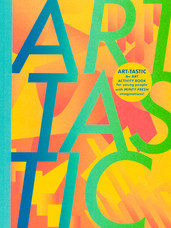
ART-TASTIC
By Sarah Pepperle
Published by Christchurch Art Gallery Te Puna o Waiwhetū
RRP: $29.99
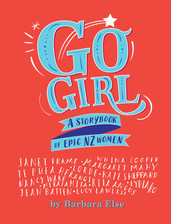
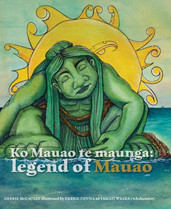
Ko Mauao te Maunga: Legend of Mauao
By Debbie McCauley
Illustrated by Debbie Tipuna
Translated by Tamati Waaka
Published by Mauao Publishing
RRP: $35.99
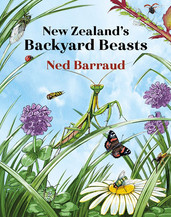
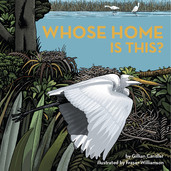
Whose Home Is This?
By Gillian Candler and Fraser Williamson
Published by Potton & Burton
RRP: $14.99



